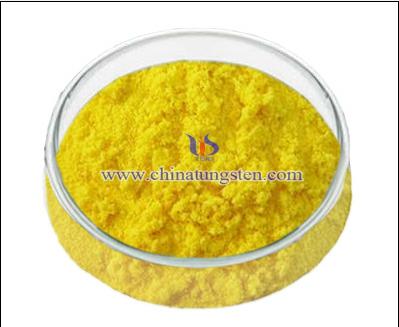Tungsten Trioxide Content Mensuration in Sodium Tungstate
- Details
- Category: Tungsten Information
- Published on Wednesday, 30 December 2015 20:10
Tungsten trioxide (chemical formula: WO3) is a kind of yellow powder. It’s insoluble in water, soluble in alkali and slightly soluble in acid. It can be made of tungsten ore and soda ash melting and adding acid. It will sublimate significantly at 850℃. It hardly reacts with inorganic acid except for hydrofluoric acid. It can slowly dissolve in ammonia or a strong alkali solution. It will generate oxychloride after reacting with chlorine gas. But it cannot react with bromine, iodine. Tungsten trioxide also has very wide uses. It is mainly used for calcining reduction in the production of tungsten powder and tungsten carbide powder to produce cemented carbide products, such as tool and mould. At the same time, it can also be used in the manufacture of pure tungsten products, tungsten rod, tungsten bars, tungsten electrode and the shielding materials of counterweight and radiation. In industry, there is a small amount used as colorant of yellow chinaware.

Sodium tungstate is also called sodium tungstate dehydrate. The character of sodium tungstate is colorless crystal or white crystal orthorhombic system. It has the gloss of flaky crystal or crystalline powder. Melting point is 698 ℃ and relative density is 3.25. It effloresces in dry air and loses the crystal water by heating to 100 ℃.Sodium tungstate is soluble in water and aqueous solution is slightly alkaline. But it isn’t insoluble in ethanol and is slightly soluble in ammonia.
How to measure the content of tungsten trioxide in sodium tungstate?Usually we use cinchonine weight method to measure.
1.Reagents: methyl violet indicator 0.1%, hydrochloric acid (1+1), 10%cinchonine hydrochloric acid solution (1+1hydrochloric acid preparation), cinchonine hydrochloric acid lotion 0.2%, solid NaOH, wide strip.
2.The operation steps:
(1)Take sample 0.5 grams in 250 ml beaker with a little water to dissolve. Add 100ml hot water of 60 ~ 80 ℃ and two drops 0.1% methyl orange agent. Use hydrochloric acid to neutralize to red and add 10ml 10% cinchonine under stirring constantly.
(2)Continue stirring to precipitate coagulation and the upper liquid is clear. After precipitate sinking, use the rapid quantitative paper to filtrate. Filter liquor should be carried in the middle of 250 ml volumetric flask.
(3)Use 0.2% cinchonine lotion to wash the precipitation above five times. Then put the precipitation into porcelain crucible with filter paper on the furnace drying coking. At last, carbonize and burn it in the 750~800℃stove for 30 to 45 minutes. Cool and weigh it. The filtrate proceeds by tannins and methyl violet colorimetric method.
Issues worthy of attention in the process of the experiment are as follows:
(1) The sodium ions precipitation must be cleaned. Otherwise, cauterant will become black and the result is on the high side.
(2) 0.1% of methyl orange indicator can be used and the filtrate can proceed by thiocyanate colorimetric method.
| Sodium Tungstate Supplier: Chinatungsten sodium-tungstate.com | Tel.: 86 592 5129696; Fax: 86 592 5129797;Email:sales@chinatungsten.com |
| Tungsten News & Prices, 3G Version: http://3g.chinatungsten.com | Molybdenum News & Molybdenum Price: http://news.molybdenum.com.cn |



 sales@chinatungsten.com
sales@chinatungsten.com